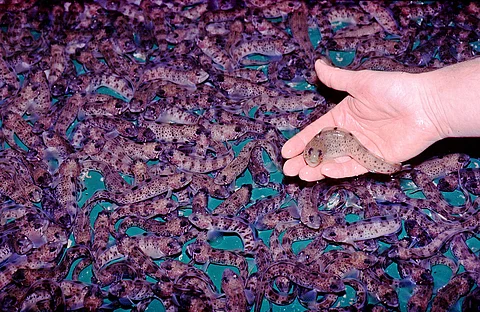

FISK, the research station located north of Tromsø, Norway, is currently investigating the large-scale production of wolffish (Anarhichas minor). This specimen has a particular appearance but which so far promotes aquaculture research.
About 70 wolffish are being bred at FISK to be able to move to large-scale farming in the future. Despite their somewhat frightening appearance, according to the latest studies, they are one of the best species for aquaculture.
After the first results, the initial phase of its reproduction for aquaculture is positive. Those include high fillet yields and high market prices. Moreover, in their tank routine, they showed non-aggressive behavior, few disease problems, and rapid growth in captivity at very high densities. And these are only the main characteristics discovered to date.
The latest research has also revealed that wolffish grow faster when lying in groups. In addition, although the culture of bottom-dwelling fish generally requires a lot of space, the behavior of spotted wolffish makes it possible to house them on shelves in a tank during the growth phase of aquaculture, when the fish reach a marketable size.
However, the research center in collaboration with Akvaplan-Niva, is working on a strategic plan to set everything up perfectly. This includes conducting small-scale scientific experiments to improve the value chain. For instance, researchers are actively working on developing an optimized feed recipe specifically designed for wolffish farming. Additionally, they are currently conducting tests on a new large-scale tank unit for wolffish designed to minimize water usage and save energy.
However, the experiments aimed at large-scale commercial production with a capacity of up to 4000 tons. As part of the plan, FISK would lease a substantial portion of the breeding stock, while simultaneously establishing a pre-commercial hatchery and fry production facility.

